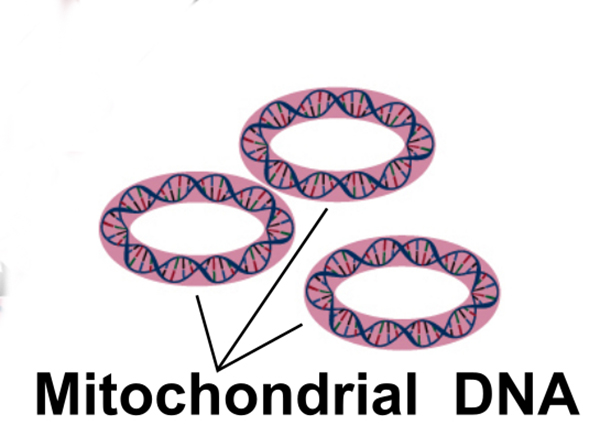Summary of article Oxidative stress is not a major contributor to somatic mitochondrial DNA mutations. Leslie S Itsara, Scott R Kennedy, Edward J Fox, Selina Yu, Joshua J Hewitt, Monica Sanchez-Contreras, Fernando Cardozo-Pelaez, Leo J Pallanck. PLoS Genet 2014 Feb 6;10(2):e1003974. doi: 10.1371/journal.pgen.1003974. eCollection 2014 Feb. PMID: 24516391 PMCID: PMC3916223 DOI: 10.1371/journal.pgen.1003974 https://pubmed.ncbi.nlm.nih.gov/24516391/
Cells from fungi, plants, and animals have inside compartments called organelles, where specific cellular functions occur. One of these organelles is the mitochondrion (mitochondria in plural), where respiration occurs and energy is extracted from food. Mitochondria are called the “energy factories” or “power plants” of the cell for that reason. Each cell has thousands of mitochondria.
Mitochondria have their own genetic material, which is a small circular DNA molecule referred to as mitochondrial DNA (mtDNA). Mutations (changes) in the DNA of mitochondria can cause many diseases, such as Leber’s hereditary optic neuropathy (LHON), Mitochondrial encephalomyopathy, lactic acidosis, and stroke-like episodes (MELAS), and Myoclonic epilepsy with ragged red fibers (MERRF). Mutations in the mtDNA are also implicated in Parkinson’s disease.
The accumulation of mutations in the mtDNA is implicated in cell aging and some of the diseases in elder people.
This study focused on answering what causes the frequency of these mutations and how they accumulate. To that end, the researchers developed an assay to measure the frequency and distribution of mutations in the mitochondria of the fruit fly, frequently used as an animal model.
The results showed that the frequency of mutations increases with age and that these mutations accumulate in a pattern similar to that of humans. It was also shown that errors made during the process of copying the mtDNA molecule (known as replication) are the main cause of these mutations.
It was believed that the main cause for the mutations found in the mtDNA was a process called oxidative stress, related to the amount of toxic free radicals in the blood. However, the present study showed that oxidative stress is only a minor cause of the mutations in the mtDNA. The major cause is attributed to the errors that arise during replication of the mtDNA.
These results shed light on the mechanisms and causes of mitochondrial DNA mutations. Given that these mutations are implicated in aging and diseases such as Parkinson’s, understanding how they occur and the factors that influence their frequency may help for the development of treatments and ways to ease the process of aging.

